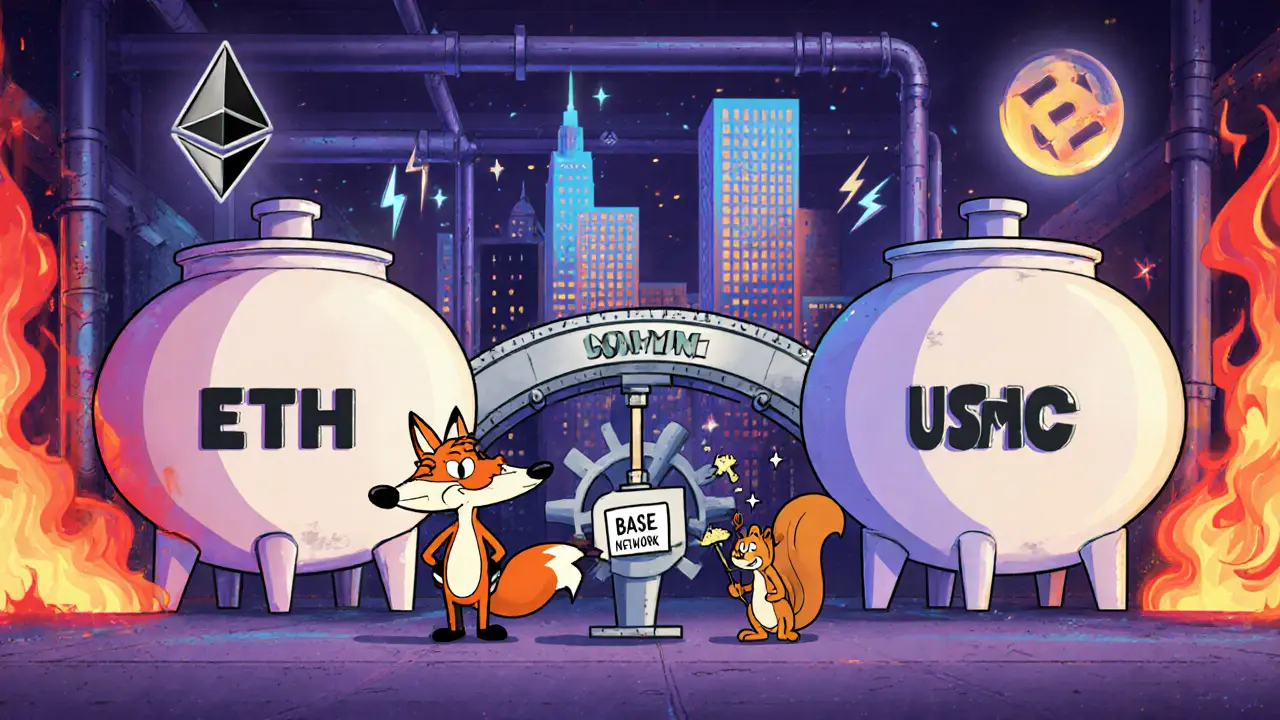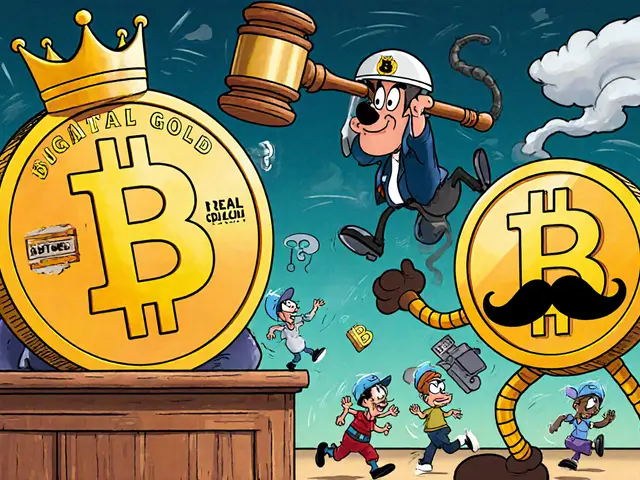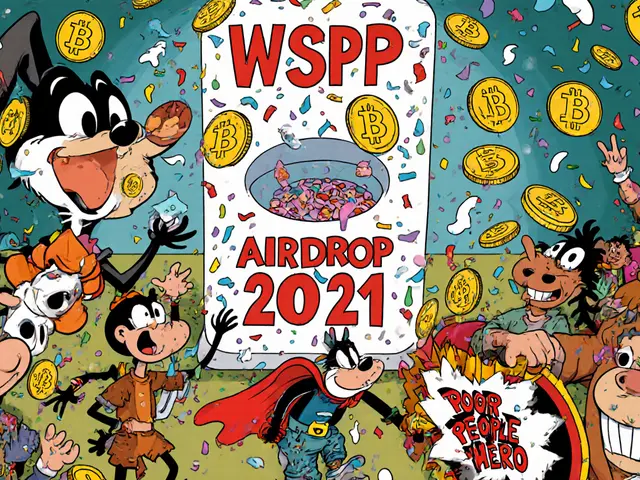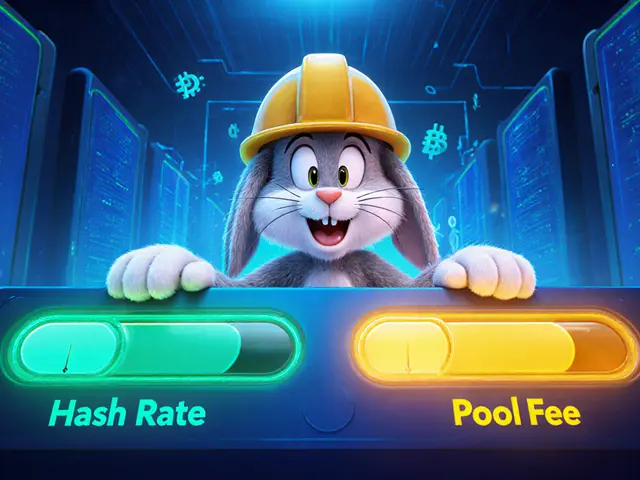
Uniswap v2 (Base) Fee Calculator
Estimated Trading Costs
* Swap fee is fixed at 0.3% on Uniswap v2 (Base). Gas costs vary by network and transaction complexity.
Fee Comparison Table
| Feature | Uniswap v2 (Base) | Uniswap v3 | Coinbase Advanced |
|---|---|---|---|
| Base swap fee | 0.3% (fixed) | 0.05%-1% (concentrated liquidity tiers) | 0.6% (market order) |
| Liquidity depth | Very high, mature pools | High, but split across price ranges | High, but subject to order-book depth |
| Network options | Ethereum, Base, Polygon, Arbitrum | Ethereum, Base, Polygon, Arbitrum | Ethereum only (via custodial bridge) |
| Complexity | Simple UI, fixed fees | Advanced UI, custom price ranges | Simple UI, but KYC & custodial |
Key Takeaways
- Uniswap v2 on Base offers a simple, low‑fee swapping experience that works on Ethereum and EVM‑compatible chains.
- Trading fees are fixed at 0.3% per swap, with optional lower tiers for specific pools.
- Liquidity is deep, meaning large trades move the market price less than on smaller DEXs.
- Gas costs can spike on Ethereum, but using Base or Polygon dramatically lowers the expense.
- While the UI is beginner‑friendly, the platform lacks fiat on‑ramps and support for non‑EVM chains.
When talking about decentralized trading, Uniswap v2 (Base) is a decentralized exchange (DEX) built on Ethereum that also runs on the Base network, using an automated market‑making system to let users swap tokens directly from their wallets. The platform has been around since 2018, and in 2025 it still draws a massive amount of daily volume because of its simplicity and reliable liquidity.
What is Uniswap v2 and how does it work?
Uniswap v2 relies on two core concepts: Automated Market Maker (AMM) - a smart‑contract algorithm that prices assets based on the relative size of the liquidity pool and Liquidity pools - reservoirs of two tokens (e.g., ETH/USDC) that users can deposit to earn a share of swap fees. When you trade, the AMM automatically pulls the needed token from the pool, updates the price, and charges a fee that goes to the pool’s providers.
The pool model eliminates order books, meaning there’s no need for a matching engine or a central authority to hold your funds. All trades execute on-chain via smart contracts, and your assets stay in your non‑custodial wallet until you confirm the swap.
Supported assets and networks
Uniswap v2 lists thousands of ERC‑20 tokens - standardized tokens on Ethereum that include ETH, USDC, DAI, LINK, WBTC, and many DeFi project tokens. While the original contract lives on Ethereum, the platform now supports Base network - an EVM‑compatible layer‑2 chain backed by Coinbase that offers lower gas fees and fast finality alongside other rollups like Arbitrum and Polygon.
Popular non‑custodial wallets such as MetaMask - a browser extension and mobile app that lets you manage private keys and connect to any EVM network, Coinbase Wallet, and Trust Wallet integrate seamlessly with Uniswap’s interface.
Fee structure and cost comparison
Every swap on Uniswap v2 charges a base fee of 0.3%. Some pools offer alternative tiers-0.01%, 0.05%, 0.3% or 1%-depending on market makers’ decisions. In contrast, a typical centralized exchange like Coinbase Advanced levies around 0.6% for market orders under $10,000 volume.
| Feature | Uniswap v2 (Base) | Uniswap v3 | Coinbase Advanced |
|---|---|---|---|
| Base swap fee | 0.3% (fixed) | 0.05%‑1% (concentrated liquidity tiers) | 0.6% (market order) |
| Liquidity depth | Very high, mature pools | High, but split across price ranges | High, but subject to order‑book depth |
| Network options | Ethereum, Base, Polygon, Arbitrum | Ethereum, Base, Polygon, Arbitrum | Ethereum only (via custodial bridge) |
| Complexity | Simple UI, fixed fees | Advanced UI, custom price ranges | Simple UI, but KYC & custodial |
| Gas cost (average) | ~$12 on Ethereum, <$0.5 on Base | Similar to v2, but can be higher for custom pools | Included in fee (no separate gas) |
Because Base offers cheap transaction fees (often under $0.10), many traders route their swaps through it to avoid Ethereum’s volatile gas spikes. The trade‑off is that certain assets may have slightly lower liquidity on Base, but the difference is usually negligible for most ERC‑20 tokens.

Pros and cons of using Uniswap v2 on Base
- Pros
- Straightforward UI-ideal for newbies and seasoned traders alike.
- Fixed 0.3% fee makes cost estimation easy.
- Deep liquidity reduces slippage on large orders.
- Non‑custodial; you retain full control over private keys.
- Access to low‑cost Base network mitigates Ethereum gas spikes.
- Cons
- No built‑in fiat on‑ramp; you must acquire crypto elsewhere first.
- Only supports EVM chains-no Bitcoin, Solana, or XRP.
- Higher gas fees on Ethereum during congestion.
- Limited customer support; you rely on community docs.
User experience and security
The front‑end looks like a clean search box: paste a token address or select from the dropdown, hit swap, and confirm the transaction in your wallet. Advanced settings-like setting slippage tolerance or deadlines-are tucked under a tiny gear icon, keeping the main flow uncluttered.
Security-wise, the protocol’s smart contracts have been audited multiple times, and no major vulnerabilities have been found since launch. However, because it’s a fully open protocol, scams can appear in the token list. Always double‑check token addresses and use the “Verified” badge provided by the UI.
Getting started in 5 minutes
- Install a compatible wallet (e.g., MetaMask - browser extension that stores your private key locally).
- Buy some ETH on a centralized exchange, then withdraw it to your wallet.
- Open the Uniswap interface, click “Connect Wallet”, and choose MetaMask.
- Select the token you want to sell (e.g., ETH) and the token you want to buy (e.g., USDC). Adjust slippage tolerance if needed.
- Confirm the transaction in MetaMask. After the network confirms, the new token appears in your wallet.
If you prefer lower fees, switch the network selector to “Base” before confirming. The same steps apply; you’ll just pay a fraction of the gas cost.
Future outlook for Uniswap v2
Even with the launch of Uniswap v3, v2 remains a solid choice for users who want a no‑frills experience. The roadmap includes deeper integration with Base and other layer‑2 chains, which should further shrink gas costs. Industry analysts predict that as long as the ecosystem keeps expanding token lists and liquidity incentives, v2 will stay relevant for the next few years, even as newer DEXs try to copy its simplicity.
Governance token UNI - Uniswap’s native token that grants voting rights on protocol upgrades and fee distributions currently trades around $8.20, giving holders a say in future fee‑tier adjustments and multi‑chain expansions.
In short, Uniswap v2 review shows a platform that balances ease of use, reliable liquidity, and reasonable fees-especially when you hop onto Base. If you’re comfortable managing your own wallet and want to avoid KYC, it’s a top pick. If you need fiat on‑ramps or want to trade non‑EVM assets, you’ll have to look elsewhere.
Frequently Asked Questions
Is Uniswap v2 still safe to use in 2025?
Yes. The core contracts have been audited repeatedly, and no critical bugs have been reported since the launch. Security comes down to using a reputable wallet and double‑checking token addresses.
Can I trade on Uniswap without paying any gas fees?
No. Every on‑chain action costs gas. However, using Base or Polygon reduces the cost to under a dollar for most swaps, compared with $10‑$20 on Ethereum during peak times.
What’s the difference between Uniswap v2 and v3?
v3 adds concentrated liquidity (providers can set price ranges) and multiple fee tiers (0.05%‑1%). v2 sticks with a single 0.3% fee and uniform liquidity across the whole price curve, which many users find simpler.
Do I need to create an account on Uniswap?
No. Uniswap is non‑custodial. You just connect your wallet and start swapping.
Which network gives the cheapest swaps?
Base and Polygon generally provide the lowest gas costs while still offering deep liquidity for most major tokens.





